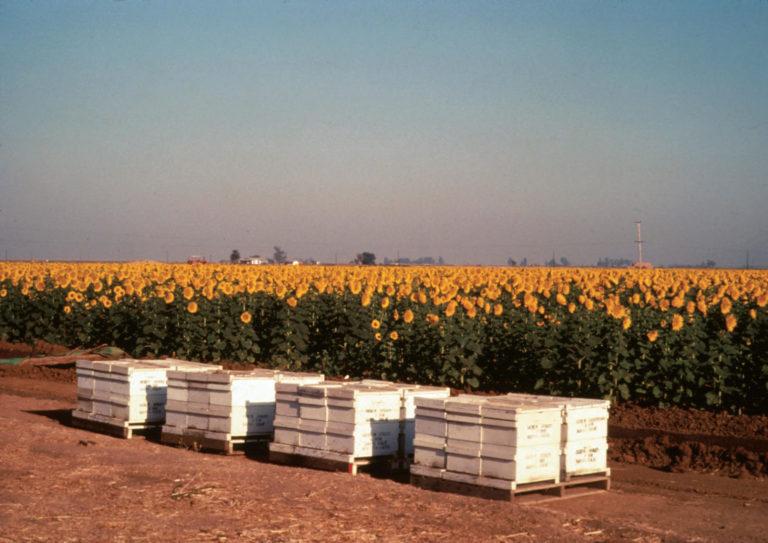Marla Spivak, PhD, Professor of Entomology, University of Minnesota
Eric Mader, Pollinator Outreach Coordinator, the Xerces Society for Invertebrate Conservation
Nature is no longer a free commodity when it comes to crop pollination. As we increase crop acreage requiring insect pollination, bees must be mass reared to meet demand. We cannot rely on natural populations of bees and other pollinators for large crops because there are simply not enough out there. Through our land use, we have decreased natural nesting sites and the diversity of plants that support our native and introduced pollinators. Even just a couple acres of a fruit or vegetable crop can require either rearing and maintaining sufficient bees on the property or paying to have bees introduced (figure 1.1). Pollination is a business, and growers who need bees must calculate their cost and value into the operating budget (see sidebar).
The economic value of bees, all bees, as pollinators is difficult to estimate. For example, data are sorely lacking on the numbers and distribution of native bees throughout the United States, so it is difficult to calculate their exact contribution to pollination. Based on the best available economic modeling, we know that native bees contribute at least 3 billion dollars annually to US agriculture. We know they are vital and of immense value. Pollination of home gardens and natural landscapes, for example, is mostly done “for free” by native species of bees and managed honey bees.
It is slightly easier to estimate the numbers and value of honey bees supplied by beekeepers. Dr. Roger Morse and Dr. Nick Calderone of Cornell University offer the best estimate available, which they based on 1998 information from USDA’s National Agricultural Statistics Service (NASS). We know the NASS survey statistics are inadequate, but they are the best we have. Morse and Calderone also conducted interviews with beekeepers, extension personnel and researchers, and in their 2000 publication concluded that “. . . the value of the increased yield and quality achieved through pollination by honey bees alone was $14.6 billion,” a 57 percent increase from a previous estimate published in 1989. They attribute 20 to 25 percent of this increase to inflation, the rest to more people needing more pollinated food. The point: All bees provide an enormous service to our diet and landscape. They are invaluable and should command our attention and respect.

